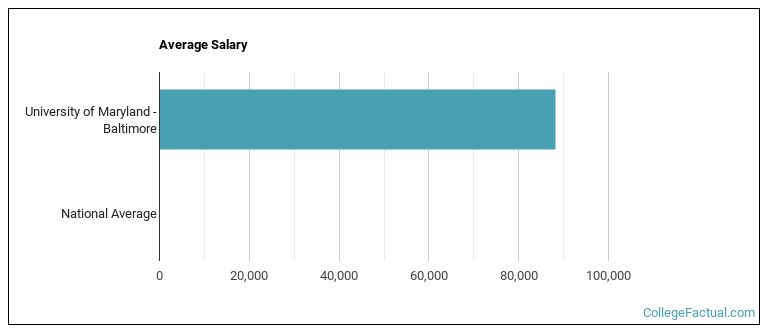 by our College Data Analytics Team
by our College Data Analytics TeamCollege Factual analyzes over 2,000 colleges and universities in its annual rankings and ranks them in a variety of ways, including most diverse, best overall quality, best for non-traditional students, and much more.
University of Maryland - Baltimore was awarded 34 badges in the 2025 rankings. The highest ranked major at the school is health professions.
Explore the best ranked schools for the programs you are most interested in.
UMB was not ranked in College Factual's Best Overall Colleges report this year. This may be because not enough data was available.
See all of the rankings for University of Maryland - Baltimore.
The student to faculty ratio is often used to measure the number of teaching resources that a college or university offers its students. The national average for this metric is 15 to 1, but at UMB it is much better at 7 to 1. That's good news for students who want to interact more on a personal level with their teachers.
Another measure that is often used to estimate how much access students will have to their professors is how many faculty members are full-time. The idea here is that part-time faculty tend to spend less time on campus, so they may not be as available to students as full-timers.
The full-time faculty percentage at University of Maryland - Baltimore is 40%. This is lower than the national average of 47%.
During the 2017-2018 academic year, there were 898 undergraduates at UMB with 707 being full-time and 191 being part-time.

See which majors at University of Maryland - Baltimore make the most money.
Get more details about the location of University of Maryland - Baltimore.

Contact details for UMB are given below.
| Contact Details | |
|---|---|
| Address: | 620 West Lexington St, Baltimore, MD 21201-1627 |
| Phone: | 410-706-3100 |
| Website: | www.umaryland.edu/ |
| Most Popular Majors | Bachelor’s Degrees | Average Salary of Graduates |
|---|---|---|
| Nursing | 752 | $78,568 |
| Pharmacy/Pharmaceutical Sciences | 406 | NA |
| Social Work | 397 | NA |
| Law | 209 | NA |
| Medicine | 149 | NA |
| Dentistry | 134 | NA |
| Mental & Social Health Services | 69 | NA |
| Rehabilitation & Therapeutic Professions | 65 | NA |
| Allied Health Professions | 45 | NA |
| Legal Research | 43 | NA |
Online learning is becoming popular at even the oldest colleges and universities in the United States. Not only are online classes great for returning adults with busy schedules, they are also frequented by a growing number of traditional students.
In 2022-2023, 3,130 students took at least one online class at University of Maryland - Baltimore. This is a decrease from the 3,322 students who took online classes the previous year.
| Year | Took at Least One Online Class | Took All Classes Online |
|---|---|---|
| 2022-2023 | 3,130 | 1,302 |
| 2021-2022 | 3,322 | 1,704 |
| 2020-2021 | 3,674 | 1,686 |
| 2018-2019 | 2,131 | 1,070 |
Learn more about online learning at University of Maryland - Baltimore.
Footnotes
*The racial-ethnic minorities count is calculated by taking the total number of students and subtracting white students, international students, and students whose race/ethnicity was unknown. This number is then divided by the total number of students at the school to obtain the racial-ethnic minorities percentage.
References
More about our data sources and methodologies.